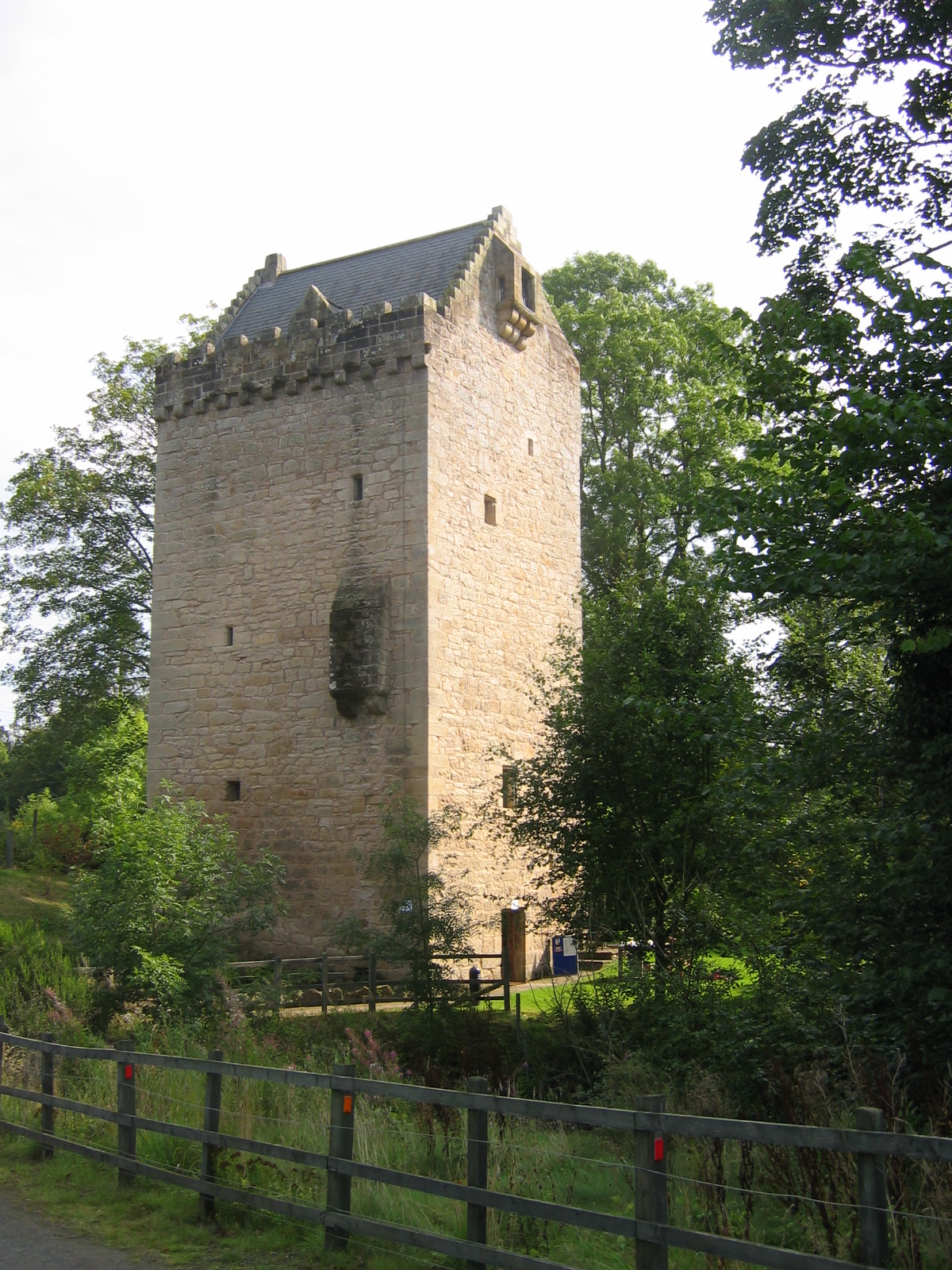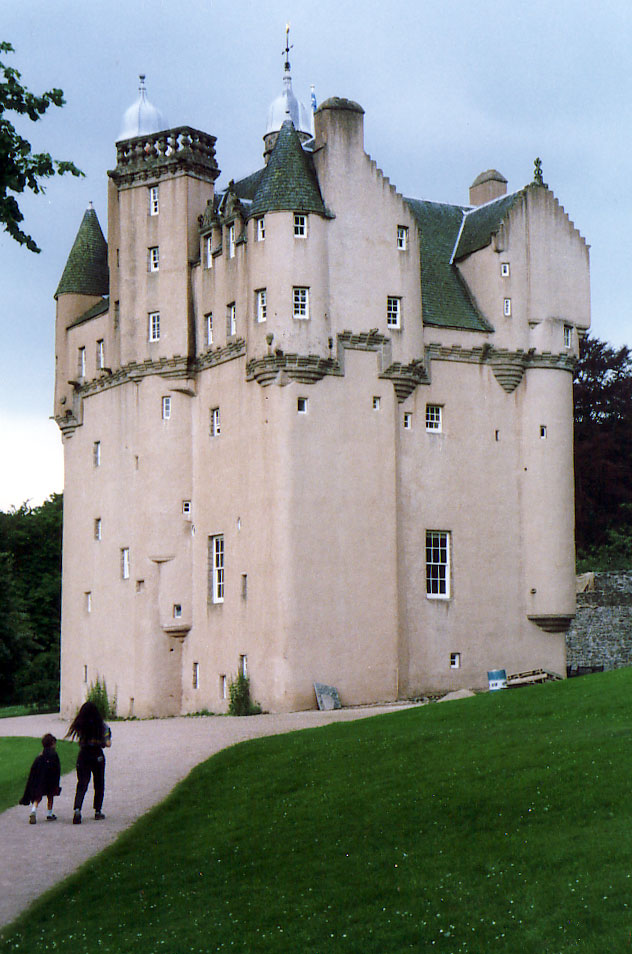|
Easter Clune Castle
Easter Clune Castle is a ruined 16th-century tower house, about south-west of Banchory, Aberdeenshire, Scotland, and south of the Water of FeughCoventry, Martin (1997) ''The Castles of Scotland''. Goblinshead. p.166 History The castle is thought to have been built by Archbishop James Stewart or Archbishop Ross. Structure Little of the castle remains: only about of the south-east corner. The walls are about high and {{convert, 1.2, m thick. *Castles in Great Britain and Ireland *List of castles in Scotland This is a list of castles in Scotland. A castle is a type of fortified structure built primarily during the Middle Ages. Scholars debate the scope of the word "castle", but usually consider it to be the private fortified residence of a lord or ... References Castles in Aberdeenshire ... [...More Info...] [...Related Items...] OR: [Wikipedia] [Google] [Baidu] |
Tower House
A tower house is a particular type of stone structure, built for defensive purposes as well as habitation. Tower houses began to appear in the Middle Ages, especially in mountainous or limited access areas, in order to command and defend strategic points with reduced forces. At the same time, they were also used as an aristocrat's residence, around which a castle town was often constructed. Europe After their initial appearance in Ireland, Scotland, the Frisian lands, Basque Country and England during the High Middle Ages, tower houses were also built in other parts of western Europe, especially in parts of France and Italy. In Italian medieval communes, urban ''palazzi'' with a very tall tower were increasingly built by the local highly competitive patrician families as power centres during times of internal strife. Most north Italian cities had a number of these by the end of the Middles Ages, but few now remain, notably two towers in Bologna, twenty towers in Pa ... [...More Info...] [...Related Items...] OR: [Wikipedia] [Google] [Baidu] |
Banchory
Banchory (, sco, Banchry, gd, Beannchar) is a burgh or town in Aberdeenshire, Scotland. It is about west of Aberdeen, near where the Feugh River meets the River Dee. Prehistory and archaeology In 2009, a farmer discovered a short cist burial to the east of the town. Archaeologists were called into excavate it and they found that it was a burial from the Beaker culture. Radiocarbon dating put the burial at sometime between 2330 and 2040 BC. Stable isotope analysis of the human remains indicated that he or she grew up on basalt geology, like that of the region, or on chalk, meaning they were either local or could have come from another place, like Yorkshire. Residue analysis of the Beaker pot found in the burial established that it had held either butter or milk. History The name is thought to be derived from an early Christian settlement founded by St Ternan. It is claimed that Ternan was a follower of St Ninian. Tradition has it that he established his settlement on ... [...More Info...] [...Related Items...] OR: [Wikipedia] [Google] [Baidu] |
Aberdeenshire
Aberdeenshire ( sco, Aiberdeenshire; gd, Siorrachd Obar Dheathain) is one of the 32 council areas of Scotland. It takes its name from the County of Aberdeen which has substantially different boundaries. The Aberdeenshire Council area includes all of the area of the historic counties of Aberdeenshire and Kincardineshire (except the area making up the City of Aberdeen), as well as part of Banffshire. The county boundaries are officially used for a few purposes, namely land registration and lieutenancy. Aberdeenshire Council is headquartered at Woodhill House, in Aberdeen, making it the only Scottish council whose headquarters are located outside its jurisdiction. Aberdeen itself forms a different council area (Aberdeen City). Aberdeenshire borders onto Angus and Perth and Kinross to the south, Highland and Moray to the west and Aberdeen City to the east. Traditionally, it has been economically dependent upon the primary sector (agriculture, fishing, and forestry) and re ... [...More Info...] [...Related Items...] OR: [Wikipedia] [Google] [Baidu] |
Scotland
Scotland (, ) is a country that is part of the United Kingdom. Covering the northern third of the island of Great Britain, mainland Scotland has a border with England to the southeast and is otherwise surrounded by the Atlantic Ocean to the north and west, the North Sea to the northeast and east, and the Irish Sea to the south. It also contains more than 790 islands, principally in the archipelagos of the Hebrides and the Northern Isles. Most of the population, including the capital Edinburgh, is concentrated in the Central Belt—the plain between the Scottish Highlands and the Southern Uplands—in the Scottish Lowlands. Scotland is divided into 32 administrative subdivisions or local authorities, known as council areas. Glasgow City is the largest council area in terms of population, with Highland being the largest in terms of area. Limited self-governing power, covering matters such as education, social services and roads and transportation, is devolved from the ... [...More Info...] [...Related Items...] OR: [Wikipedia] [Google] [Baidu] |
Water Of Feugh
The Water of Feugh (pronounced:''few-ikh'') is a stream in Aberdeenshire that is the largest tributary to the River Dee. This stream rises in the Grampian Mountains of Scotland, in an area known as the Forest of Birse, and has a particularly scenic aspect in a series of cascades at the Bridge of Feugh slightly above its point of discharge to the Dee. Hydrology The Water of Feugh is a tributary of the River Dee, forming a confluence at Banchory. Classified in the Strahler Stream Order system the Water of Feugh is a second order river, with tributaries including the Burn of Curran and the Burn of Knock. The pH level of the greenish or orange-brown waters of the Water of Feugh is slightly alkaline with a pH of 8.19.Hogan, C. Michael, ''History of Muchalls Castle'', Natural History section (2005) Summer water temperatures near the mouth run approximately 14.1 degrees Celsius. See also *Leuchar Burn Leuchar Burn is a stream that rises in the Loch of Skene, in Aberdeenshire, ... [...More Info...] [...Related Items...] OR: [Wikipedia] [Google] [Baidu] |
Archbishop
In Christian denominations, an archbishop is a bishop of higher rank or office. In most cases, such as the Catholic Church, there are many archbishops who either have jurisdiction over an ecclesiastical province in addition to their own archdiocese ( with some exceptions), or are otherwise granted a titular archbishopric. In others, such as the Lutheran Church of Sweden and the Church of England, the title is borne by the leader of the denomination. Etymology The word archbishop () comes via the Latin ''archiepiscopus.'' This in turn comes from the Greek , which has as components the etymons -, meaning 'chief', , 'over', and , 'seer'. Early history The earliest appearance of neither the title nor the role can be traced. The title of "metropolitan" was apparently well known by the 4th century, when there are references in the canons of the First Council of Nicæa of 325 and Council of Antioch of 341, though the term seems to be used generally for all higher ranks of bish ... [...More Info...] [...Related Items...] OR: [Wikipedia] [Google] [Baidu] |
Clan Stewart
Clan Stewart ( Gaelic: ''Stiùbhart'') is a Scottish Highland and Lowland clan. The clan is recognised by Court of the Lord Lyon; however, it does not have a Clan Chief recognised by the Lord Lyon King of Arms. Because the clan has no chief it can be considered an armigerous clan; however, the Earls of Galloway are now considered to be the principal branch of this clan, and the crest and motto of The Earls of Galloway's arms are used in the Clan Stewart crest badge. The Court of the Lord Lyon recognises two other Stewart/Stuart clans, Clan Stuart of Bute and Clan Stewart of Appin. Clan Stuart of Bute is the only one of the three clans at present which has a recognised chief. History Origins of the Clan The Stewarts who became monarchs of Scotland were descended from a family who were seneschals (stewards) of Dol in Brittany, France. After the Norman conquest of England, the Stewarts acquired estates in England as the FitzAlan family, also Earls of Arundel. Walter Fl ... [...More Info...] [...Related Items...] OR: [Wikipedia] [Google] [Baidu] |
Clan Ross
Clan Ross ( gd, Clann Anndrais ) is a Highland Scottish clan. The original chiefs of the clan were the original Earls of Ross. History Origins The first recorded chief of the Clan Ross was "Fearcher Mac an t-Sagirt" which in English meant "son of the priest" alluding to his Ó Beólláin descent from the hereditary Abbots of Applecross.Way, George and Squire, Romily. (1994). pp. 308–309. Fearchar helped King Alexander II of Scotland (1214–1249) crush a rebellion by Donald Bane, a rival claimant to the Scottish throne. Fearchar was knighted by the king and by 1234 he was officially recognized with the title of Earl of Ross. The Earl's son, William was abducted in about 1250 in a revolt against the Earl's rule. However, he was rescued with help from the Munros who were rewarded with lands and who became closely connected with their powerful benefactors. Wars of Scottish Independence During the Wars of Scottish Independence the Clan Ross fought against the English at t ... [...More Info...] [...Related Items...] OR: [Wikipedia] [Google] [Baidu] |
Castles In Great Britain And Ireland
Castles have played an important military, economic and social role in Great Britain and Ireland since their introduction following the Norman invasion of England in 1066. Although a small number of castles had been built in England in the 1050s, the Normans began to build motte and bailey and ringwork castles in large numbers to control their newly occupied territories in England and the Welsh Marches. During the 12th century the Normans began to build more castles in stone – with characteristic square keep – that played both military and political roles. Royal castles were used to control key towns and the economically important forests, while baronial castles were used by the Norman lords to control their widespread estates. David I invited Anglo-Norman lords into Scotland in the early 12th century to help him colonise and control areas of his kingdom such as Galloway; the new lords brought castle technologies with them and wooden castles began to be established over th ... [...More Info...] [...Related Items...] OR: [Wikipedia] [Google] [Baidu] |
List Of Castles In Scotland
This is a list of castles in Scotland. A castle is a type of fortified structure built primarily during the Middle Ages. Scholars debate the scope of the word "castle", but usually consider it to be the private fortified residence of a lord or noble. This is distinct from a fortress, which was not a home, although this distinction is not absolute and the same structure may have had different uses from time to time. The term has been popularly applied to structures as diverse as hill forts and country houses. Over the approximately 900 years that castles were built, they took on a great many forms. In Scotland, earlier fortifications had included hill forts, brochs, and duns; and many castles were on the site of these earlier buildings. The first castles were built in Scotland in the 11th and 12th centuries, with the introduction of Anglo-Norman influence.Lindsay, Maurice (1986) ''The Castles of Scotland''. Constable. p.17 These motte and bailey castles were replaced with the f ... [...More Info...] [...Related Items...] OR: [Wikipedia] [Google] [Baidu] |

.jpg)



.jpg)

